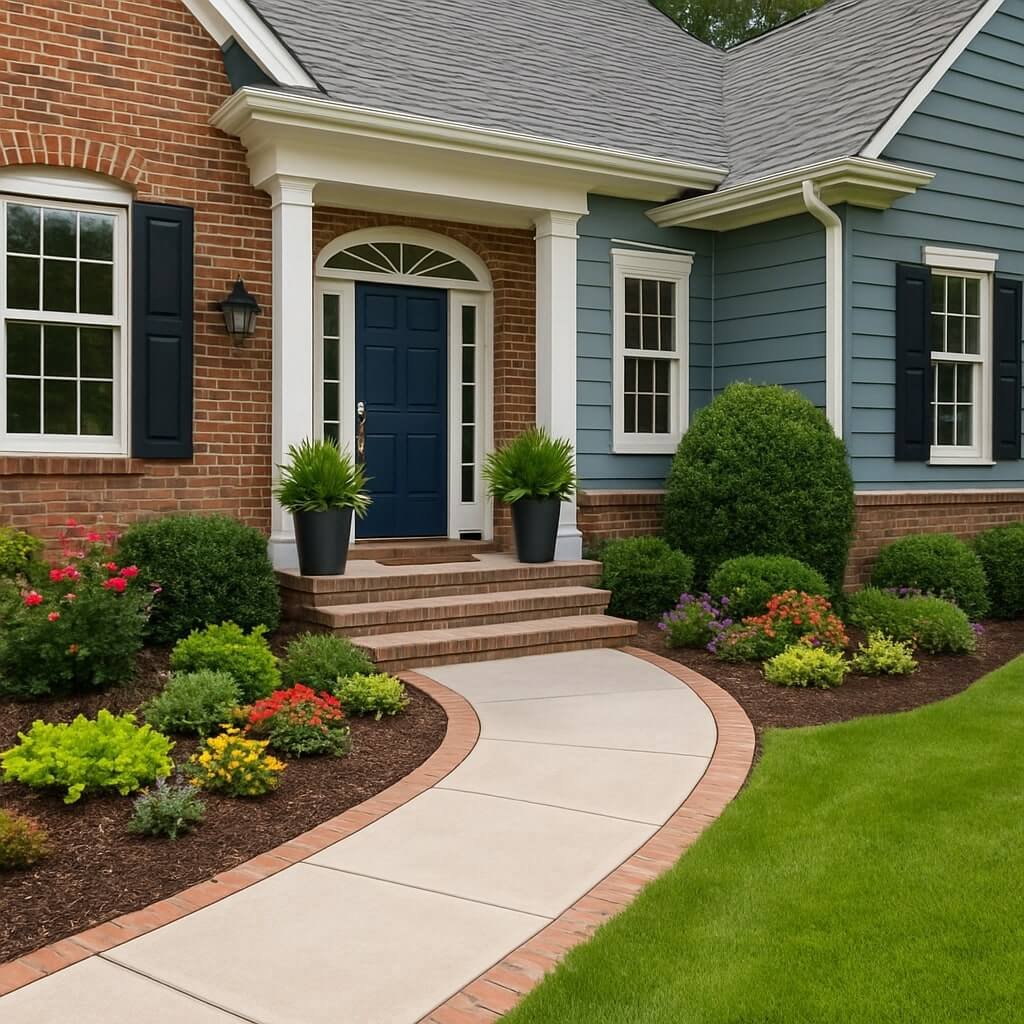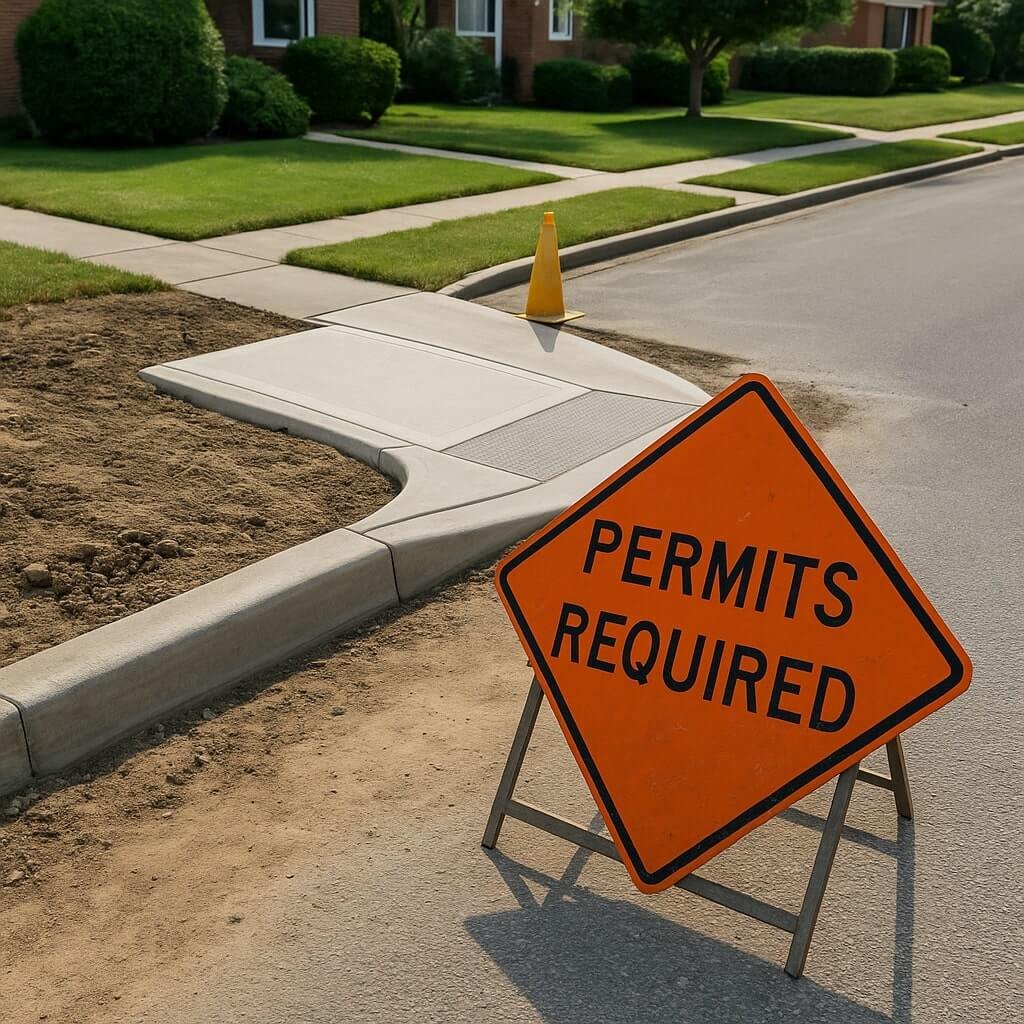A curb improvement plan is a strategic, design-driven approach to upgrading the exterior of your property. It includes landscaping layouts, hardscape integration, lighting design, and architectural upgrades that collectively enhance your home’s curb appeal. These plans are tailored to your property’s structure, style, size, and your personal goals—whether that’s boosting resale value or increasing personal enjoyment.
A professional curb improvement plan typically includes:
- Site analysis and measurements
- Visual renderings or sketches
- Material and design recommendations
- A detailed timeline and cost estimate
Who Should Use These Plans?
Anyone looking to maximize their home’s visual impact should consider a curb improvement plan. They’re especially useful for:
- Homeowners preparing to sell
- Real estate investors flipping properties
- Property managers want consistent design
- Homeowners in HOA neighborhoods with specific design guidelines
Hiring a professional ensures the design is not only attractive but also sustainable, code-compliant, and budget-friendly.
Customized Landscaping Plans
A lush, well-designed landscape can dramatically increase curb appeal and property value. But generic landscaping won’t cut it—tailored plans that align with your climate, soil, and property style are essential.
Native Plants for Low Maintenance
Opting for native plants not only supports local ecosystems but also requires less water, fertilizer, and maintenance. This eco-friendly approach appeals to modern buyers who prioritize sustainability.
Benefits include:
- Better pest resistance
- Lower irrigation needs
- Seasonal color and texture
Lawn Design and Edging
Neatly edged lawns and intentional grass patterns create a clean, polished look. Consider alternatives like:
- Curved lawn borders for softness
- Gravel or stone edging for a modern aesthetic
- Artificial turf in drought-prone areas
Pairing lawn care with mulching, irrigation system updates, and decorative plantings will complete a polished landscape design.
Professional Driveway and Walkway Design
Your driveway and walkway are the literal path to your home—don’t overlook them in your curb improvement plan.
Materials That Last and Look Great
Consider using materials that provide both form and function:
- Stamped concrete for durability and style
- Brick or cobblestone pavers for a classic touch
- Permeable pavers for water efficiency and drainage
These materials are long-lasting and offer customization in color and pattern to match your home’s exterior.
Smart Drainage Solutions
Water damage and puddles are not only unsightly but can erode your walkways. Integrating a drainage system into your hardscape plan ensures longevity and safety. French drains, sloped designs, and permeable paving help redirect water effectively.
Front Entrance Renovation
The front door is a focal point of curb appeal—make it bold, inviting, and aligned with your home’s overall aesthetic.
Statement Doors and Hardware
Modern entry doors come in a range of materials:
- Fiberglass – durable and paintable
- Steel – secure and energy-efficient
- Wood – timeless and elegant
Adding upscale hardware like a sleek handle, knocker, or smart lock not only enhances appearance but also boosts security.
Porch and Stair Enhancements
Update your front porch with features like:
- Tiled or stone steps
- Decorative railings
- Seasonal planters
- Comfortable seating
A fresh coat of paint, combined with stylish outdoor furniture, can transform your entrance from bland to beautiful.
Lighting for Safety and Style
Outdoor lighting adds depth, drama, and most importantly, safety to your property’s exterior.
Pathway Lighting
Use solar or LED pathway lights to line walkways, driveways, and entrances. They provide visibility while guiding guests and deterring intruders.
Accent Lighting for Features
Highlight key architectural or landscaping features with uplighting or spotlights. Popular uses include:
- Lighting up a beautiful tree or sculpture
- Emphasizing textures in stone walls or siding
- Adding a soft glow under the porch steps
With timers and smart controls, you can automate and adjust lighting to suit every season.
Exterior Painting and Siding Updates
A fresh coat of paint can instantly make your home look newer and well-maintained.
Choosing Modern, Neutral Colors
Trending colors like greige, soft white, charcoal, and navy provide a contemporary and universal appeal. They also work well with most landscape palettes and roof types.
Tip: Use a 3-color scheme—one for siding, one for trim, and one for accents like shutters and doors.
Maintaining Paint and Siding Longevity
Use high-quality, weather-resistant paints. If your home has siding, inspect it regularly for cracks or wear. Consider upgrading to fiber cement or vinyl siding for long-term performance and lower maintenance.
Strategy #6: Fence and Gate Upgrades
A stylish, well-placed fence defines your property while adding a layer of security and charm.
Decorative vs. Functional Fencing
- Decorative: Low picket fences, wrought iron, or modern horizontal slats for visual impact
- Functional: Privacy fencing or chain-link with greenery for families or pets
Make sure the fence height and materials align with local regulations and HOA rules.
Gate Placement and Design Tips
A gate should be both welcoming and secure. Match your gate’s design to the rest of the fence, and consider adding:
- Automatic openers
- Keypad locks
- Decorative lanterns or arches
Roofing and Gutter Maintenance
Though not always front-of-mind, your roof and gutters play a key role in visual harmony and structural safety.
Spotting Issues Early
Look for:
- Missing or warped shingles
- Rusted flashing
- Sagging gutters
Addressing these signs early can save money and preserve your home’s value.
Enhancing Curb Appeal with Rooflines
Stylish rooflines, dormers, or even metal roofing accents can add visual interest. Matching gutter colors to trim or fascia also offers a cohesive look.
Outdoor Living Space Additions
People crave outdoor spaces for relaxation and entertainment—don’t just focus on the backyard!
Front Porches and Seating Areas
Even a small porch can feel like a retreat with:
- Cozy chairs
- Hanging plants
- Outdoor rugs
Garden Features and Water Elements
Add personality with:
- Birdbaths
- Mini fountains
- Sculptures or raised garden beds
These features invite curiosity and create a tranquil environment.
Mailboxes, House Numbers, and Accents
Sometimes it’s the little things that make a big impact.
Small Details That Matter
Update:
- Mailboxes with a custom post or masonry base
- House numbers in modern fonts and finishes
- Doorbells and knockers that match your design theme
Coordinating with Home Style
Ensure these accents align with the architectural tone of your home. For example:
- Rustic homes: bronze or weathered wood
- Modern homes: stainless steel or matte black
- Colonial styles: brushed brass or classic serif fonts
How to Choose a Professional for Your Curb Improvement Plans
Look for professionals with:
- A portfolio of similar projects
- Client testimonials and reviews
- Clear timelines and transparent pricing
- Experience in your climate and region
Don’t hesitate to ask for references and verify licenses or insurance.
Budgeting and ROI Considerations
Curb improvement doesn’t have to break the bank. Prioritize based on ROI:
- Landscaping: 100% return or more
- Entry door upgrades: up to 75%
- New garage doors: 90 %+ return
Set a budget, but leave room for unexpected costs. Use platforms like HomeAdvisor to compare quotes.
FAQs About Curb Improvement Plans
1. How much does a curb improvement plan typically cost?
Costs range from $2,000 to $20,000+, depending on scope, materials, and design complexity. Basic plans start lower, while custom, high-end projects cost more.
2. Do I need permits for curb improvements?
Yes, some exterior upgrades (like fencing, lighting, or large-scale landscaping) may require local permits. Your contractor can guide you through the process.
3. How long do these projects take?
Most curb improvement plans take 2 to 6 weeks, depending on weather, materials, and contractor availability.
4. Can I do curb improvements in phases?
Absolutely. Many homeowners choose to break upgrades into manageable stages—starting with landscaping and working toward more structural changes.
5. Will it increase my home’s resale value?
Yes. Homes with polished curb appeal often sell faster and for more money. Even minor upgrades can yield impressive returns.
6. Are there eco-friendly curb improvement options?
Yes. Use native plants, solar lighting, and permeable pavers to reduce environmental impact while enhancing beauty.
Conclusion: It’s Time to Improve Your Property’s First Impression
Creating a professional curb improvement plan isn’t just about looking good—it’s a smart investment in your property’s value, safety, and appeal. By implementing thoughtful strategies like customized landscaping, lighting, and front entry updates, you can transform your home’s exterior into a true reflection of its inner charm.



